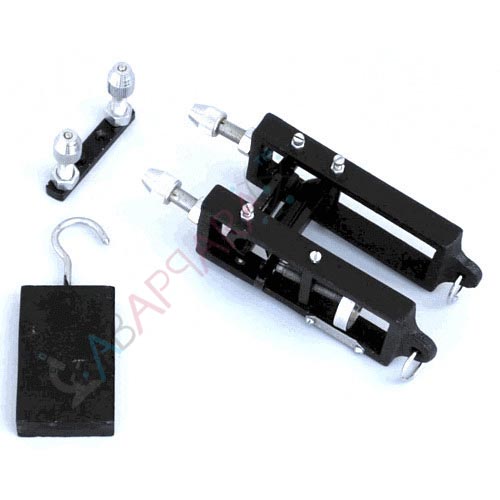|
Labappara scientific instrument https://www.labappara.com/product/youngs-modulus-experiment/ Export date: Wed Apr 16 2:05:20 2025 / +0000 GMT  |
Young’s modulus Experiment
Product Categories: (Class 11), Physics Experiment Product Tags: Analytical Laboratory Equipment, Lab Measuring Instrument, Labaoratory Equipment, Physics equipment, Scientific Equipment Product Page: https://www.labappara.com/product/youngs-modulus-experiment/
Product DescriptionYoung's modulus ExperimentOur Objective Our aim is to determine the Young's modulus of elasticity of the material of a given wire using Searle's apparatus. The TheoryBefore we move ahead, do you know what a Searle's apparatus is?Searle's apparatus consists of two metal frames F1 and F2. Each frame has a torsion head at the upper side and a hook at the lower side. These frames are suspended from two wires AB and CD of same material, length and cross-section. The upper ends of the wires are screwed tightly in two torsion heads fixed in the same rigid support. A spirit level rests horizontally with one end hinged in the frame F2. The other end of the spirit level rests on the tip of a spherometer screw, fitted in the frame F1. The spherometer screw can be rotated up and down along a vertical pitch scale marked in millimeters. The two frames are kept together by cross bars E1 and E2. Do you know Searle's apparatus works on the principle of Hooke's law?Hooke's law can be expressed in terms of stress and strain. Stress is the force on a unit area within a material that develops as a result of the externally applied force. Strain is the relative deformation produced by stress. Define Hooke's LawHooke's Law states that within the limit of elasticity, stress applied is directly proportional to strain produced. That is, the extension produced in a wire is directly proportional to the load attached to it. If a wire of length L and radius r be loaded by a weight Mg and if l is the extension produced, Then, normal stress = ---------------(1) And Longitudinal strain= -----------------(2) Hence, Young's modulusY= Where,
|
|
Product added date: 2017-12-15 12:28:48 Product modified date: 2018-05-23 17:28:50 |
|
Export date: Wed Apr 16 2:05:20 2025 / +0000 GMT Product data have been exported from Labappara scientific instrument [ https://www.labappara.com ] Product Print by WooCommerce PDF & Print plugin. |
